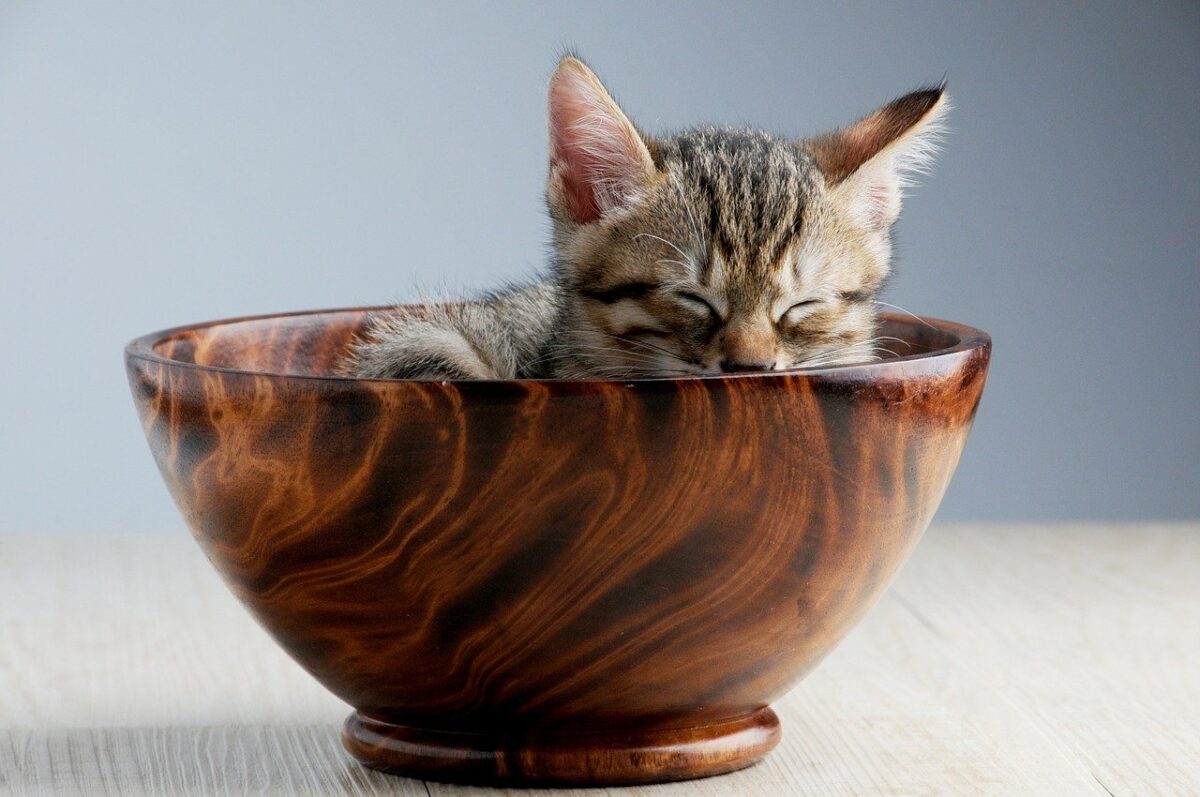Cats are recognized not just for taking lots of power naps but especially for sleeping in unusual postures. Just like your cat might also have a preferred sleeping posture. Since they’re such fascinating creatures, looking at how they sleep might reveal a lot about how they’re thinking.
Cat sleeping positions could also reveal any underlying problems they might be facing, feeling hot/cold or just scared. Considering they love sleeping, this might be a great opportunity to check in on your cat. I have listed down some fun facts of cats sleeping patterns to explain to you how to understand your pet’s sleeping postures in this article.
In this article, I have listed down some fun facts of cat sleeping positions and their meanings to explain to you how to understand your pet’s sleeping postures.
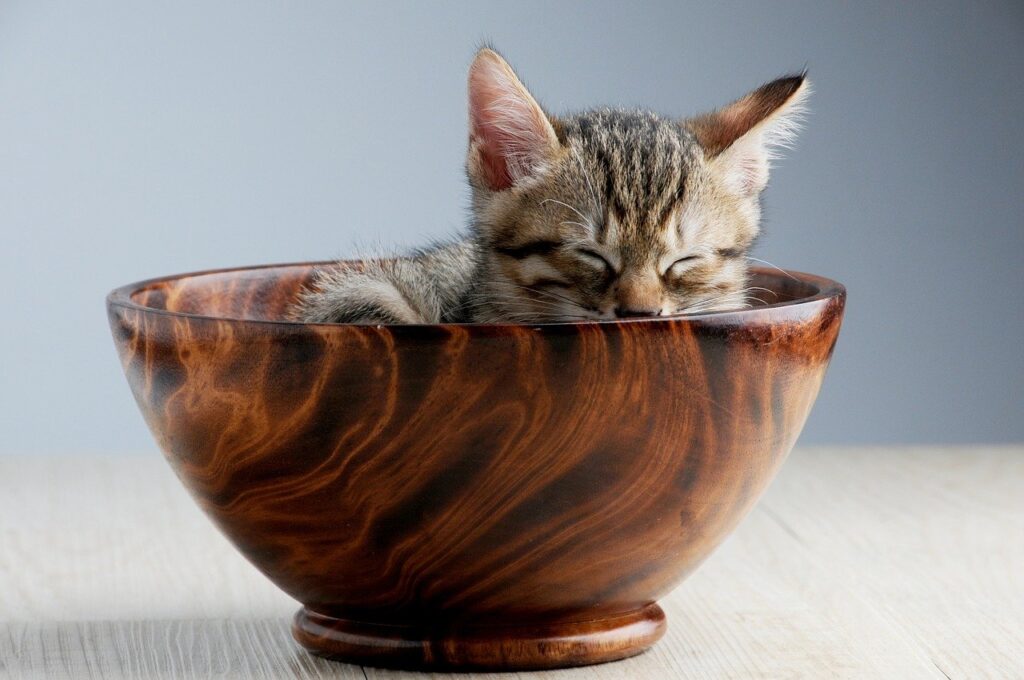
1. Cat Sleeping With Its Belly Up
It may appear amusing if your feline friend is lying on its back and exposing its belly in front of you. This posture indicates that your pet is at ease and content in its environment.
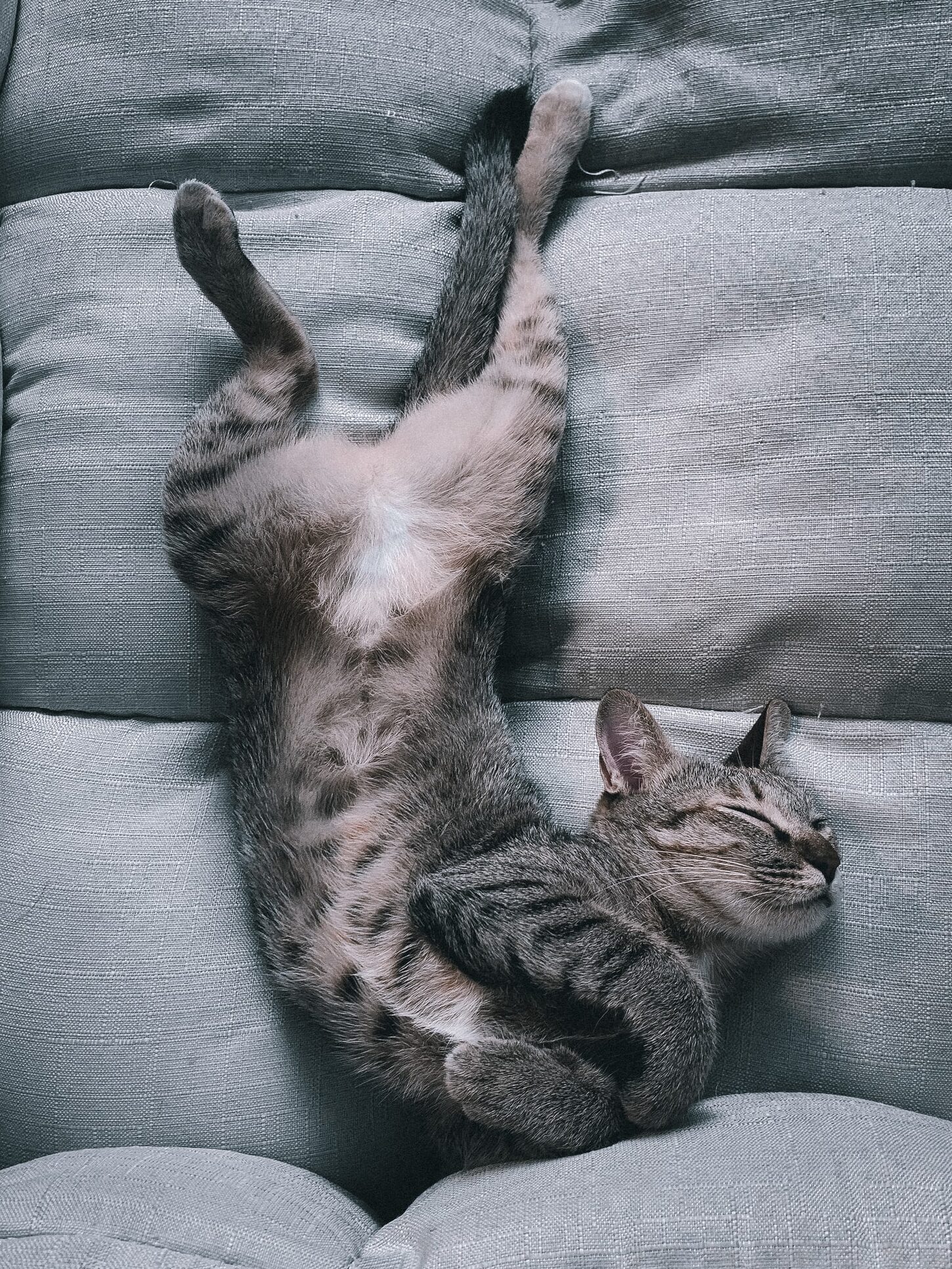
When a cat sleeps on its back, it shows its tummy, which is a very vulnerable posture. It doesn’t protect their sensitive stomach and organs, but it’s also a challenging posture to get out of fast if they have to run. To pick this napping position, a cat must have complete trust in its surroundings. So, congrats; your cat has complete trust in the environment you’ve made for them. Cats will also expose their bellies to fellow cats, especially if they are sleeping in close contact.
If your cat prefers to rest in this posture while lying around you, it means they have full faith in you. So don’t tickle their soft tummy or startle them while they are sleeping.
Domestic cats are the only ones who sleep in this posture. Outdoor cats cannot develop this level of full confidence in their surroundings. Kitties who nap on their backs are also known to be brave and outgoing.
2. The Curled-up Pose
A cat taking a nap in a curled-up position might indicate a variety of meanings. However, this appears to be a certain posture, your kitty guards vital organs. It is actually a reverse position of napping on the back. As a result, when a cat rolls up to sleep, it is relaxing in its most natural position. Even if you pamper them and your pet knows they’re secure with you, sometimes cats can’t seem to get rid of the natural inclinations that always keep them on high alert.
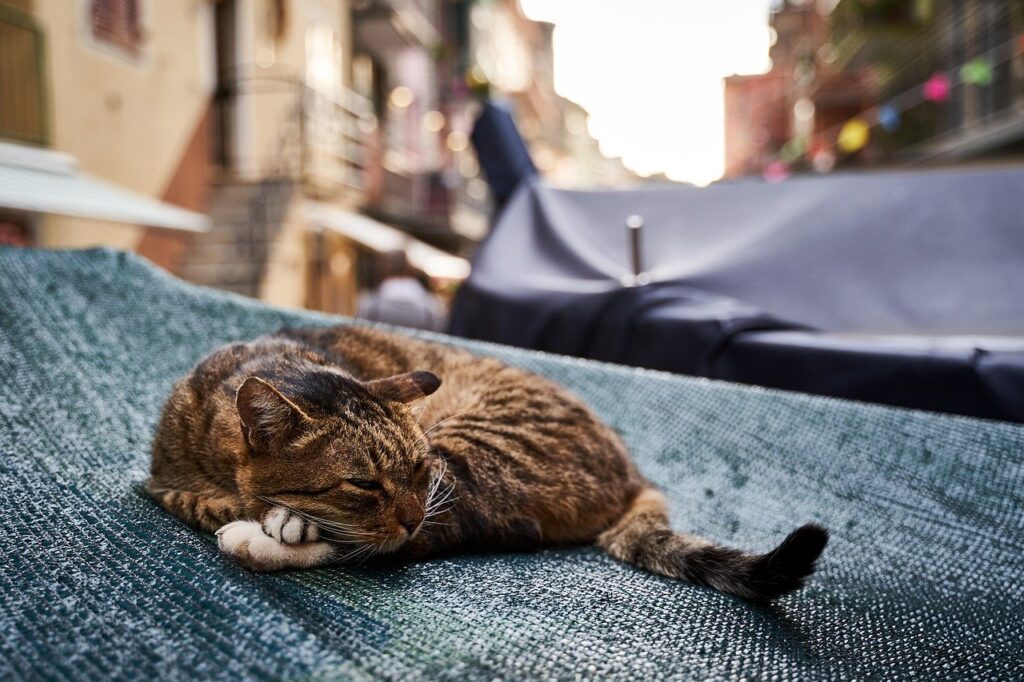
When a cat rests in this posture, it usually wants a silent place to sleep peacefully. Your cat may also preserve heat by curling up and brushing its tail over its body. Therefore if your pet doesn’t usually prefer a curled-up resting posture but unexpectedly does, it could be cold. Regarding temperament, a cat that frequently sleeps in this posture is considered watchful and maybe scared. Cats also have great self-confidence and are content with the fact that they can easily grab your attention whenever they want.
Are you aware that the climate impacts your cat’s sleeping patterns? Your feline companion, like you, becomes extremely lazy during the rainy season.
3. Side sleeper
Whenever your cat sleeps on its side, it is indeed a sign that it is content. They indicate trust in everyone around them and their surroundings since they’re not guarding any important organs. Whenever a feline is resting in this posture, it is more probably in a sound sleep for extended periods than in any other postures.
This resting posture is generally associated with cats that are comfortable and happy. When you observe your pet in this position, you can be certain that they sleep well. It’s not common to notice the muscle’s movement, which is a solid indicator they’re dreaming.
4. Sleeping Under Something
The next sleeping posture resembling a cat’s natural tendencies is tucking themselves under sheets, beneath the couch, or maybe just burying their head with paws. If a cat is under anything, it feels safe.
They could maintain this position for a variety of reasons. Whenever their paws are placed over the eyelids, it is usually to keep their little nose warm or to keep the light away from their eyes.
If your pet’s face is buried, it means it prefers to be alone for some time. Hiding your cat’s face in a dark and comfortable place makes them feel secure and points out that they need some rest. It’s better to leave your furry friend alone while they’re resting in this posture and avoid petting them.
5. Sleeping With Half Opened Eyes
Do you find yourself wondering why your cat likes to sleep with partially opened eyes? Well, it’s due to their predatory instinct, which always forces them to look out for predators. This resting posture is common in recently rescued or adopted cats and those that live in loud environments. Leaving the eyes partially open helps them receive the relaxation they require while being able to respond quickly to any abrupt sound or activity.
You may observe that instead of having both eyes half-closed, your kitty will have one eye wide open and the other closed. This type of sleep, referred to as unihemispheric slow-wave sleep, allows part of your furkid’s mind to become sleepy, whereas the remaining part remains alert.
While it may appear unusual, there’s nothing to stress about if your cat doesn’t have an underlying eye condition that prevents them from shutting its eyes.
6. The Loaf Position
The ‘loaf’ posture is achieved when your kitty tries to fit its paws below its belly and wraps its tail while maintaining its head straight and eyes shut.
They are not going to fall asleep in this posture; they will rest. It’s basically as if your kitty is meditating and may do so for long durations.
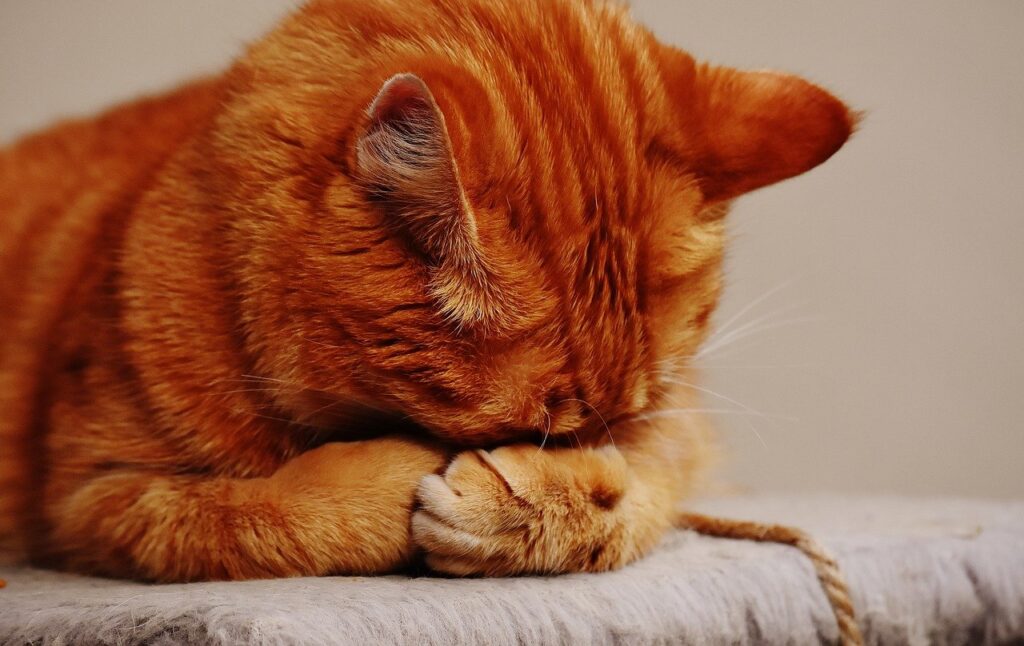
A kitty in this posture is at peace in its environment and does not see any danger. Your pet might also be planning a surprise attack, or it isn’t actually sleeping but is simply relaxing.
If your kitty rests in this posture on a daily basis, it is usually in a relaxed state. During the colder months, you might see your cat maintaining this posture more frequently since it helps them maintain body temperature.
7. Sleeping in a Box
You’ll want to grab your phone and take pictures when you see this cat-napping posture. Squeezing itself into a container to obtain some rest is often regarded as one of the sweetest things a kitty can do. Due to the protection provided by the walls, it’s another safe sleeping posture for a kitty. A cat staying in a noisy environment would most likely seek for containers to nap in, isolated from any potential sources of disturbance.

Cats have a talent for fitting themselves into tight areas to sleep. The tighter the room, the more secure they are. Cats that enjoy this resting posture are generally brave and furious. They require safety because they fear others attacking them while sleeping, just like they would if they saw you sleeping.
8. Fully Twisted
Cats with their arms extending in one way and their legs folded in or spread in the reverse direction — totally rotating their body – are happy in their current position. Despite that, cats remain attentive, and getting out of this posture is quite simple for a feline if they require taking action.
A cat that prefers this resting posture is considered to be highly active and confident. They’re self-assured and may appear a little mischievous, but it actually means that they are excited.
9. Stretched Cat
You might be questioning yourself how this little fellow can be so comfortable in this strange sleeping posture. They bend their paws and bodies in bizarre angles, and their heads are at an odd angles, yet your cat appears to be comfortable. If your kitty sleeps in weird angles that don’t appear to be comfortable, they’re probably looking for attention.
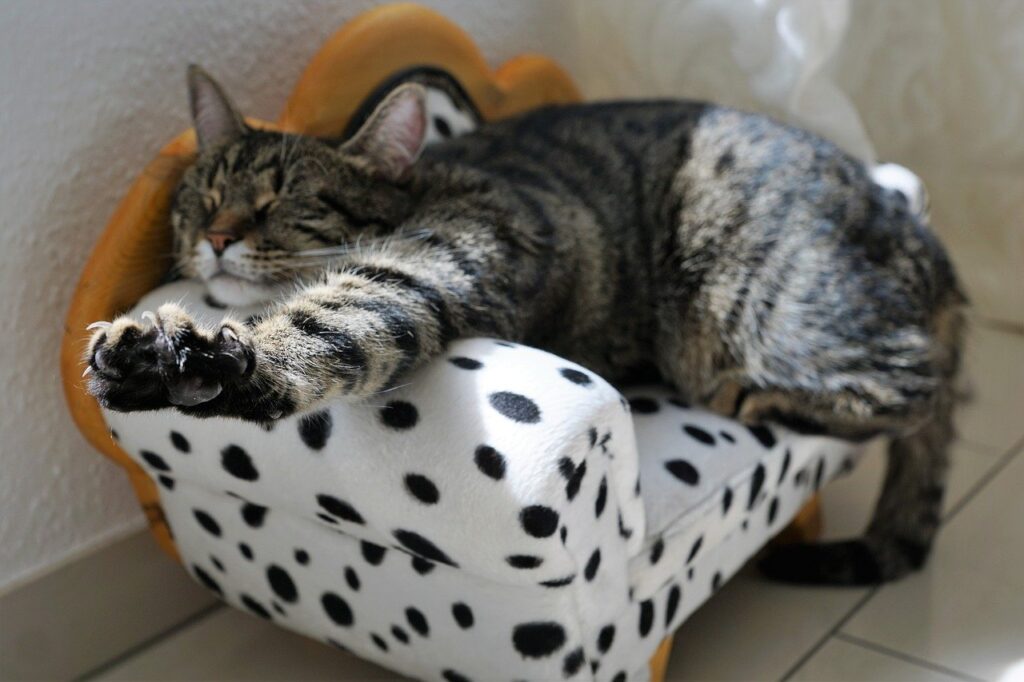
They often put their chin on their legs to raise it slightly. When your kitty is spread out and napping, they don’t give a damn about anything.
10. Sleeping on You
While sleeping, if your pet gently touches you or hugs you, it signals that they have a lot of trust in you. It takes deep trust for a pet to let someone be present while they sleep, dropping their guard down. If they want to hold you when they’re asleep, it’s because they feel comfortable with your physical presence.
Kittens do not want to be distracted when resting; therefore, they will prefer to rest on your body parts that will stay still.
Final Thought
A cat’s napping posture could be a personal choice or reveal something about its nature. A cat that never chooses a posture that exposes them to danger could be afraid or not confident. When cats pick where to rest, it is often based on their comfort zone. Their comfort could be in their loved one’s presence or avoiding everyone. No matter what position your cat feels comfortable sleeping in, you should never disturb them.
